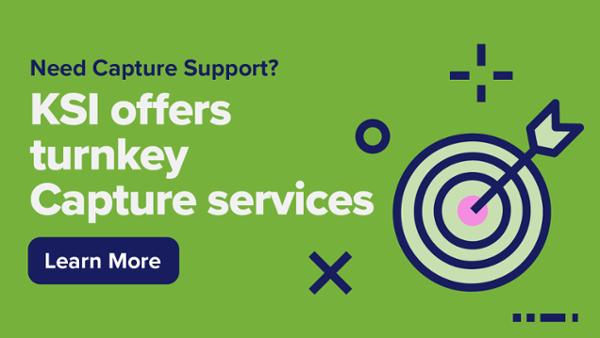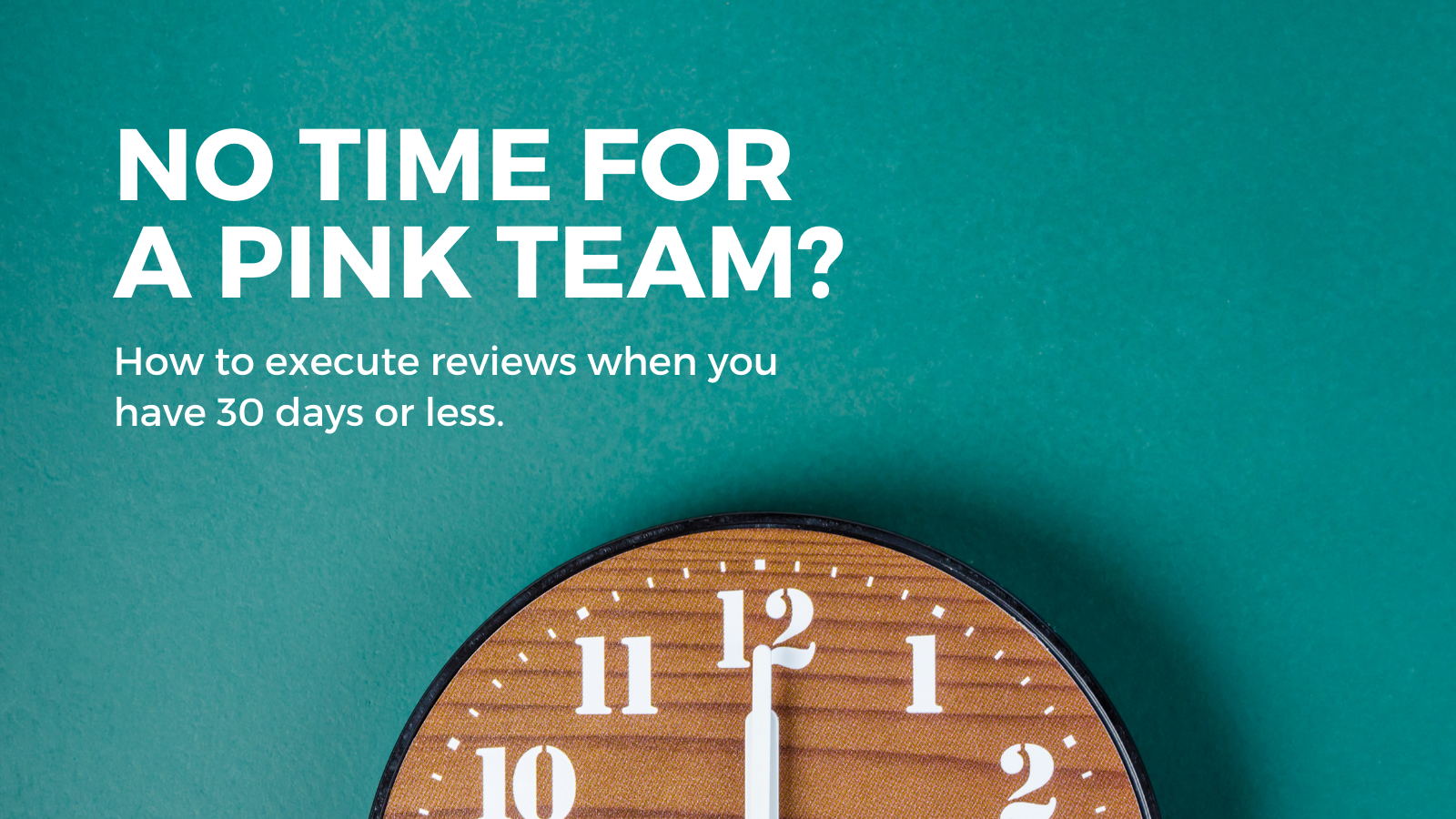If you want to improve your overall win rates, there are several tactics that can help you succeed. These tactics include:
- Applying a thorough strategy in the opportunities pursued
- Starting pursuits earlier to gain an understanding of the customer and competitive landscape
- Documenting the intelligence gained from the capture or sales stage
- Applying rigor in the bid decision process
- Making your proposals easy to score
- Conducting lessons learned so you can understand where you are doing well and where you need to improve
In this article, we deep dive into one of those critical tactics: applying a thorough pursuit strategy.
Win Rate vs. Capture Rate
Before we discuss the bid pursuit strategy in a bit more detail, I wanted to touch on win rates vs. capture rates.
Win rates are calculated by taking the total opportunities won and dividing them by the total opportunities pursued, while capture rates are the total dollars won by the total dollars pursued. Looking at both rates is important in understanding whether you have a healthy pursuit strategy.
Sometimes looking at the numbers in extremes can help. For example, let’s say your team loses one large proposal worth $500M but wins three small proposals worth $10M each. In this instance, your win rate is fairly high (75%), but the impact on revenue is fairly low ($30M). In this example, you’ll see that the capture rate is actually quite low as well ($30M/$530M = 6%). Now let’s say your team wins that one large proposal worth $500M but loses the three small proposals worth $10M each. In this instance, your win rate is comparably lower (25%), but your capture rate is significantly higher ($500M won/$530M pursued = 94%). In this example, the $500M in wins does much more for the company’s overall business performance than the $30M in wins from the example with the higher win rate.
You should aim to have a healthy balance between your win and capture rates.
The team should be sure to consider the administrative costs that go into the smaller deals—on both the pursuit side and the execution side. Smaller dollar value proposals often require just as much effort to pursue as larger dollar value proposals—and require almost as much contractual documentation on the execution side.
All that is not to say that your company should only go after large opportunities. For example, based on the size and capabilities of your organization, it may simply be easier to win smaller opportunities. By pursuing opportunities that are in your company’s sweet spot, so to say, these multiple small opportunities may keep your win rates high and revenues steady.
However, by slowly and strategically pursuing larger efforts, you may be able to expand into contracts that overall will require less administrative support on the pursuit and win side, as well as on the execution side.
How to Use Win and Capture Rates to Better Inform Pursuit Strategies
Capture and win rates are great starting points for assessing the health of a business development organization. For example, if you notice low win or capture rates, you can start to assess the reasons why you might now be winning.
We recommend starting with the evaluation debriefs from the customer. If the debriefs cite problems with compliance, then it may be that the process is breaking down at the end, when the Proposal Manager takes the reins. However, if the debriefs cite problems with the solution or lack of customer understanding, it’s much more likely the problem starts much earlier than the RFP drop, during the business development and capture phases. Or there may even be a breakdown in the transfer of knowledge and information between the capture and proposal phases.
Companies can also analyze which customers and services they seem to have higher success rates with and the reasons why this may be the case. For example, you’ll likely notice a higher success rate among opportunities where the team has better relationships with the customer, proven contract success with the customer, and/or proven contract success delivering a similar product or service.
In those areas where you notice less success, perhaps you need to build stronger customer relationships, team to strengthen your position within the customer organization, and/or consider subcontracting in product/service areas where you are looking to expand.
Assessing Potential Opportunities
Armed with an understanding of your company’s strengths and weaknesses, you can begin to make better informed decisions when assessing potential opportunities.
When assessing potential opportunities for a positive pursuit decision, it’s important to ask questions that determine whether the opportunity aligns with the overall company strategic goals, whether the opportunity meets individual business unit goals (if applicable), whether the company has the right capabilities to win and deliver the work, and whether the team has the necessary past performance to support a win.
When vetting potential opportunities in the pipeline, teams may consider factors such as the win probability, whether there is adequate time to respond, whether the team has solid customer information, whether funding is available, and whether the opportunity falls within the targeted business market.
Other considerations include how well the team can meet the anticipated requirements, whether the contract is worth the effort required to bid, and whether the team has the available resources to sufficiently support the proposal effort.
The team may also consider the following guidance when making pursuit decisions:
Similar Product/Service, Existing Customer
Pursuit Indication: Strong
Recommended Strategy: Because you know the product, market, and customer, you should focus on the competition and understanding their strengths, weaknesses, and likely strategies
Similar Product/Service, New Customer
Pursuit Indication: Some Caution
Recommended Strategy: Because you don’t know the customer and market as well, you should first focus your efforts on learning the market and customer. You’ll want to establish your company in the market and build relationships with the customer before focusing on the competition.
New Product/Service, Existing Customer
Pursuit Indication: Caution
Recommended Strategy: You’ll want to proceed with caution. First focus on filling capability gaps and making sure you have a solution that meets the needs of your customer. Then turn your attention to learning about the competition.
New Product/Service, New Customer
Pursuit Indication: Weak/Success Unlikely
Recommended Strategy: You should drop this opportunity from the pipeline. If you decide to pursue this opportunity, it will require significant resources and will still likely have a very low probability of success.
By spending energy on opportunities that fit the business goals and that have a higher chance of success, you’ll not only save time and money, you’ll improve the morale of your resources. In addition to lowering your overall win and capture rates, consistently pursuing opportunities with low probabilities of win is an ineffective use of resources, which can burn out your staff, lower morale, and result in increased capture and proposal staff turnover.
Final Thoughts
There are so many factors that impact a company’s probability of win, and a number of things throughout the opportunity lifecycle can impact a company’s chances of winning (both positively and negatively).
However, one key thing that you can do to positively impact your chances of winning is to simply pursue the right opportunities. Select opportunities that make sense for your business strategy, where you have strong relationships or can build strong relationships before the Request for Proposal (RFP) drops, where you have demonstrated success delivering similar products or services. Select opportunities where you have sufficient time to address any gaps, weaknesses, or showstoppers.
Remember, once the RFP is released, it’s very likely too late to mitigate any of these potential flaws in your approach, capabilities, or solution. It’s no wonder that pop-up or short-notice efforts typically have a much lower win rate than strategically targeted and well-positioned opportunities. This is all why starting the process early and applying a solid pursuit strategy really are so critical to improving your chances of winning and increasing your overall win and capture rates.
This article was originally published on Proposal Reflections.









